With a tool on a trailer
crashing, but also science! "
Peter I
The Second World War and the subsequent armed conflicts around the world marked the beginning of a victorious march on the battlefields of self-propelled artillery. This led to the fact that many experts began to predict the imminent disappearance of towed artillery as a type of weapon. Numerous conclusions of experts boiled down to the fact that towed artillery is too vulnerable on the battlefield, it takes a lot of time to transfer from a transport position to a combat position and vice versa, and any movement of it depends on vulnerable tractors. However, with all the shortcomings, according to armory experts Eric H. Bayass and Terry J. Gander, towed artillery will still remain in service for a long time for many reasons. Its first and most important advantage is ease of transportation over long distances, which favorably distinguishes towed artillery from self-propelled ones. This is especially important when you need to quickly deploy units and conduct a local operation.
In addition to mobility, there are several more factors that allow us to conclude that this type of artillery will be in demand for a long time. The main advantage is cost. In most cases, various types of towed artillery are cheaper in production and further maintenance than more expensive and complex self-propelled platforms. This type of artillery weapon is easy to transport and does not load the transport network, like self-propelled types (recall that the mass of some self-propelled guns approaches the mass of the main tanks) In addition, in the mountains or during amphibious landing operations, the use of self-propelled artillery is practically impossible. It is important to add that the main models of towed artillery are also easily transported by air, allowing the rapid transfer, for example, by helicopters or military transport aircraft.
Towed artillery has become widespread throughout the world, so the question of its importance and further development remains relevant. Foreign military experts, comparing towed and self-propelled artillery, consider first of all the basic requirements for modern types of these weapons. The main condition that guarantees the relevance of any type of modern guns for the military remains the maximum possible firing range.
In addition, minimizing the overall weight of the artillery system remains an important direction for the development of modern gunsmiths. This is important because in extreme situations, towed artillery relies heavily on the physical strength of the calculation. As you can see, the firing range and weight are the main characteristics that modern designers are puzzled with. In the work they have to observe a certain balance. Thus, the use of longer barrels and reinforced charges provides a weapon with a greater firing range. However, this increases the mass of the gun. And the relief of the barrel and the gun carriage leads to a loss of structural strength.
Modern artillery, including towed, has a wide range of calibers - from 75 to 155 mm. Currently, gauges larger than 155 mm or less 105 mm are rarely used. These are mainly tools that were used on the battlefields of the last century and remain in the ranks to perform any special tasks. However, the need to use them is very rare. So today we can distinguish three main ranges of calibers. The first is 105 mm, the second is from 122 to 130 mm and the third is from 152 to 155 mm.
The caliber 105 mm is widely distributed for a simple reason: it is able to deliver a fairly effective projectile at a decent distance. The guns of this caliber are in service in many countries of the world. However, many samples refer to the period 1939 – 1945. It is also important that 105 caliber guns weigh a little. In the course of numerous operations in which the light detachments had to operate in difficult or remote areas, 105-mm guns were the heaviest of those that could be used in such conditions. That is why 105-mm artillery is still in the arsenal of many leading armies in the world. For the armies of developing countries, the 105 caliber mm - the maximum of those that they can afford. These factors were the main reason for the commercial success of the British 105-mm Light Gun.
In modern weapons production, the 122 and 130 mm calibers are no longer a priority. The main samples in service were created several decades ago. Nevertheless, the X-NUMX-mm howitzer M-122 of the Soviet design (model 30 of the year) is widespread. In addition, 1938-mm M-130 field gun, created in the USSR at the beginning of the 46-s, is used in many countries around the world.
130-mm field gun M-46
The main attention of designers of all countries of the world today is focused on systems of caliber 152 and 155 mm. These guns are the main component of field battery towed artillery. However, the separation between the 152 mm caliber systems in the East and the 155 mm in the West will remain in force in the near future. In the meantime, Eastern European countries began replacing 152-mm guns with NATO-style 155-mm guns. However, a full transition to the caliber 155 mm is hardly possible.
105 mm
The main advantage of 105-mm systems is the significantly lower weight and size characteristics of not only the gun, but also ammunition. Due to the fact that the mass of the gun and propellant charge of the 105-mm shot is less than that of the 155-mm specimens, the 105-mm guns are characterized by a much lower recoil force and a higher rate of fire.
Today, the American 105-mm howitzer М101 remains the most widespread model of towed artillery. She is one of the veterans of the world artillery systems: for the first time, 1919 was about to create it. It is officially in service with more than 60 countries. Most of these time-tested weapons in service are in the 1940 – 1945 release year. However, their durable and reliable design is already approaching the development of its resource. This type in the future will be subjected to modernization, which includes the installation of longer barrels to increase the firing range, as well as appropriate recoil mechanisms. Another option for upgrading is to enhance the mast. Manufacturers often produce special retrofit kits that are installed locally.
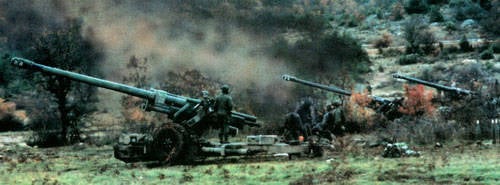
The leading player in this market remains Rheinmetall DeTec, which has upgraded the M101 of the German Bundeswehr in service by installing longer barrels. Thus, the maximum range of standard projectiles from 11.270 to 14.100 meters was increased.
There are two more 105-mm artillery samples that dominate the market today. RO Defense continues to produce its 105-mm Light Gun, while Giat offers the LG1.
It is worth adding that more than a thousand British Light Guns are in service with at least 17 countries. The largest user is the US Army, with more than half of the guns used produced under license in the United States under the designation МХNUMXА119. Light Gun comes with 1 year, but thanks to advanced design and manufacturability is not going to go from the scene. For Light Gun, various upgrade options are offered, including the latest digital fire control systems. Indian Ordnance Factory Board offers a clone of Light Gun, known as 1973 / 105 Light Field Gun E37.
М119А1
The Italian-made 105-mm “pack” howitzer Model 56 produced by Otobreda is in service with many armies in the world. Lightweight and easy to use, the Model 56 remains a masterpiece of artillery design thought, but it is beginning to become obsolete due to the small firing range - no more than 10.575 meters. This is the price you have to pay for a light and transportable howitzer that can be transported unassembled with the help of pack animals (which is especially convenient in mountainous terrain).
howitzer Model 56
122 mm and 130 mm
122 mm and 130 mm gauges - the legacy of the former Warsaw Pact countries - are rooted in Russia.
When evaluating 122-mm guns, first of all it is worth mentioning howitzer D-30 (2А18).
D-30 delivers a high-explosive fragmentation projectile weighing 22 kg to a range of 15.300 meters. These are very good results for 122-mm howitzers weighing a little over 3 tons. The D-30 proved to be highly adaptable, its latest version, the 2-18M, includes changes that allow towing at a higher speed, and some improvements in service.
howitzer D-30 (2А18)
Another 122-mm howitzer, which can be found almost everywhere, is also made in Russia. It is more traditional in constructive terms М1938 (М-30). Despite the fact that this howitzer is quite a few years old, it is not going to leave the stage yet. М1938 has long been discontinued in Russia, but it is still offered by the Chinese company Norinco as 122-mm. Type 54-1.
In addition to howitzers in the caliber 122, there is also a field gun D-74, developed at the end of the 1940-s as an alternative to the 130-mm M-46. Over time, M-46 gained more recognition, but D-74 was still produced in appreciable quantities. It is no longer in service with the advanced units of the Russian army, but is manufactured by Norinco under the designation Type 60 and exported to Nigeria, Cuba, Peru, and some other countries.
152 mm
The caliber 152 mm has long been standard in the USSR and has remained so in Russia. The armed towed samples are designed so that the carriage from the previous sample is used to install the new trunk. A departure from this practice was made when creating an 152-mm 2-36 gun, designed to replace the X-NUMX-mm M-130. Today 46A2 is also used in the CIS countries, but in very limited quantities. The main distinguishing features of the 36А2 remain a long barrel (36 gauges), two wheels on the sides of the gun, which bear a load of about 49 tons, as well as the ability to deliver a 10 projectile kg to a range of 43 meters. When using an active-missile projectile, the firing range increases to 27.000 m.
152-mm gun 2A36
Current trends in Russian artillery are better represented by the 152-mm gun-howitzer 2А65, better known as "MSTA-B". This traditional carriage design with sliding beds was created in the middle of 1980's. The range of high-explosive fragmentation projectile weighing 43,5 kg is 24.700 meters. Combat weight 2А65 - about 7 tons. This is much more than the mass of the 152-mm 2A61, which weighs 4,35 tons.
MSTA-B
It is also worth noting the X-NUMX-mm D-152 howitzer cannon produced in China under the designation Type 20. The designers who created the D-66 at the end of the 20-s, used the experience gained during the Great Patriotic War. That is why D-1940 used many proven solutions aimed at increasing the strength of the structure. Today, D-20 is in service with many countries, from Vietnam to Algeria.
152 mm howitzer D-20
155 mm
The main transition from smaller calibers to the caliber 155 mm began with the 1970-s. The desire to shoot heavy projectiles at longer distances was embodied with the introduction of long 39-caliber shafts. This solution is applied in the American M198, British-French-German-Italian FH-70, French Giat 155 TR, Spanish Santa Barbara SB 155 / 39 (remained at the prototype stage) and Swedish Bofors FH-77B (an early sample of FH-77A needed ammunition not compatible with NATO standards). At about the same time, the Chinese company SRC, which was headquartered in Belgium at that time, seriously shook the market by presenting 45 long-caliber barrels and ultra-long-range projectiles with an optional bottom gas generator. These innovations have allowed to significantly increase the firing range - up to 40.000 meters compared to 30.000 meters in barrels with a length of 39 calibers. The obvious advantages of the barrel length 45 calibers forced other firms to connect to the race. This led to the fact that barrels of 45 lengths of calibers actually became the standard for field artillery. If potential customers wished, further extension of the barrel to 52 calibers and the introduction of more powerful charges opened up a lot of new possibilities in terms of using this type of guns. The G5 howitzer was one of the first samples of towed artillery, equipped with a 52 barrel with a caliber. This weapon was designated G5-2000. When using long-range projectiles with increased speed (a combination of active-projectile technology and the use of a bottom gas generator), firing range over 53.000 meters is achieved. The G5-2000 uses a digital fire and service management system.
G5-2000
American 155 mm howitzer M114
Today the modernized old and deserved American 155-mm howitzer М114 has received wide application. Replacing the existing 23-caliber trunk with the 39-caliber, as well as strengthening the carriage in several places allows us to increase the service life of this “veteran”. A significant part of the modernization is carried out at the local level using the appropriate kits from the manufacturer.
Ammunition of the future
Artillery science considers howitzer as a weapon intended for firing at squares. Nevertheless, designers have recently paid attention to two important directions in the development of artillery when conducting research and development. The first and most important is the correction of the projectile trajectory in flight. This requirement was born out of pure necessity. The use of longer barrels, more effective propellant explosives and new projectiles (active-reactive or with a bottom gas generator) led to a significant increase in the firing range. In this case, projectiles with a trajectory correction in flight have an air or jet braking system. They are turned on either by a radio signal (which, in turn, is sent by a radar to monitor the trajectory), or by a GPS receiver installed in the projectile. The main idea is to send a projectile at a distance slightly exceeding the distance to the target, after which the projectile is slightly braked and its trajectory is adjusted.
The second direction in the development of artillery systems was the transformation of a howitzer into an anti-tank weapon. In the West, two systems were developed: Smart, represented by Giws, and Bonus, developed by Giat and Bofors. Both Smart and Bonus work on the same principle. The shell-container carries two intelligent sub-shells. At a predetermined height above the intended target, the container opens and releases sub-projectiles. They, in turn, reveal their asymmetrical aerodynamic surfaces (Smart uses a parachute, Bonus uses small metal wings), which slow down the descent and give the projectile rotational motion. While the sub-projectile is dropping, its internal radar “inspects” the earth in a tapering spiral. As soon as an object corresponding to the pattern embedded in its algorithm is brought into the radar's field of view, the warhead with a shock “core” is shot at the target using an explosive charge. Both Smart and Bonus are in production and do not require any changes to existing howitzers for use.
Thus, in the development of towed artillery guns, two main trends can be traced: the first concerns the reduction in the mass of systems, the second the increase in firing accuracy. Combat weight has a direct impact on the ability to quickly transport weapons, including over long distances. Increased accuracy of shooting reduces the need for ammunition. Reducing the consumption of ammunition, in turn, reduces the load on the rear support agencies and increases the speed of deployment of artillery units during operations at a considerable distance from the main forces.
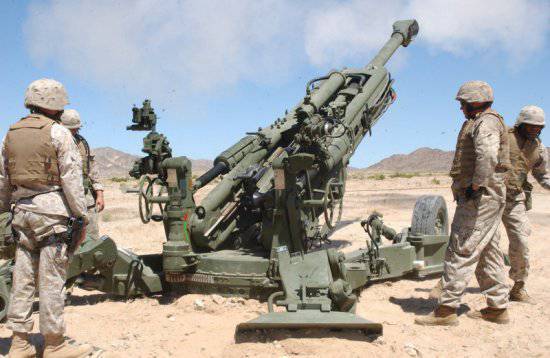
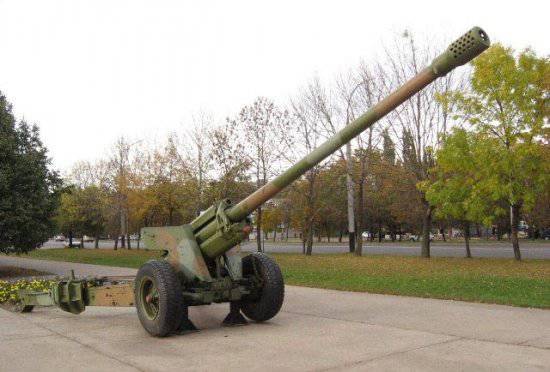
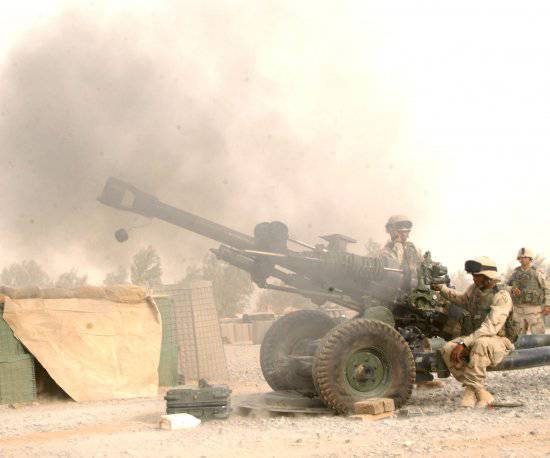
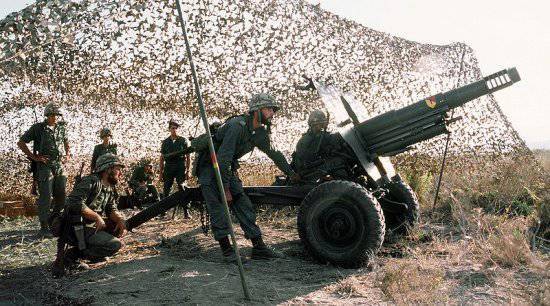
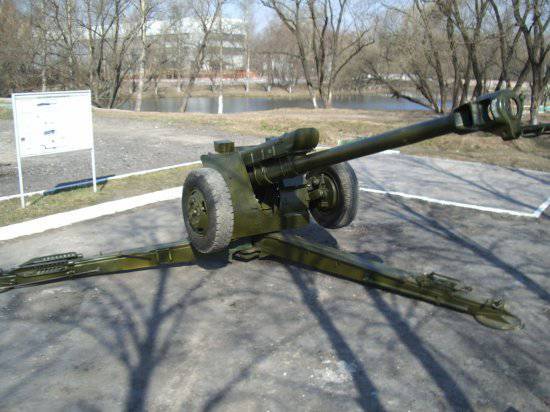
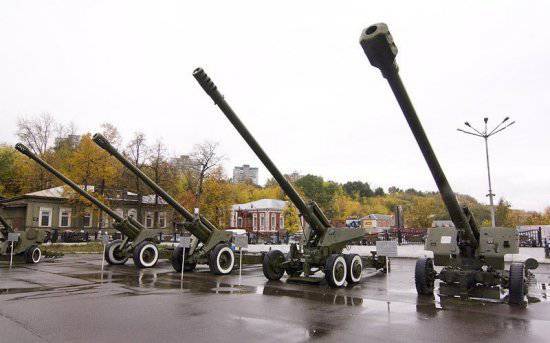
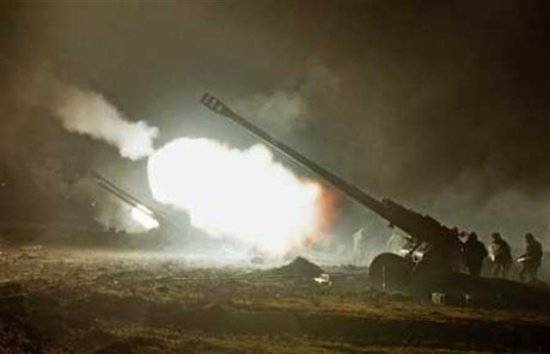
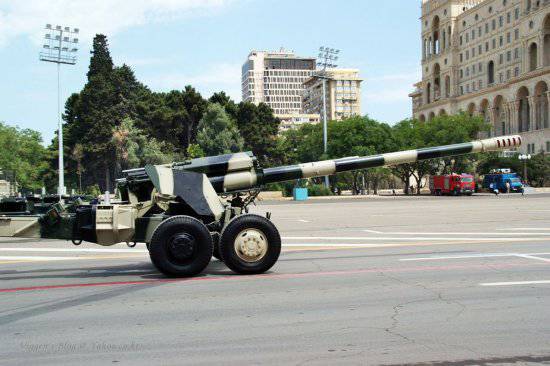
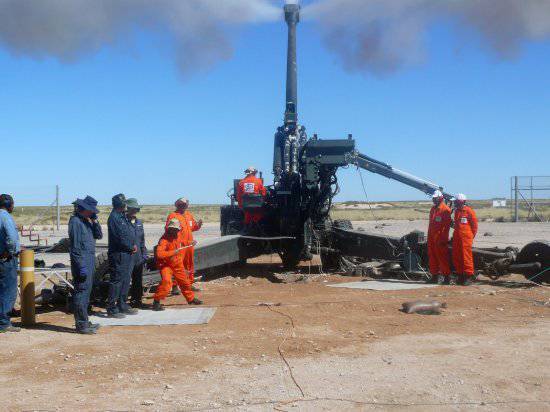
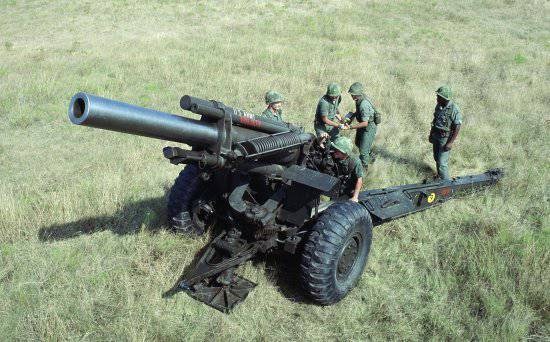
Information